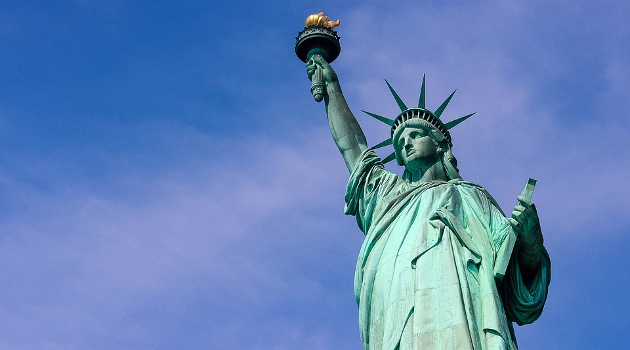This article is written by Sujitha S, from the School of Excellence in Law, Chennai. This article deals with the last foundational agreement between India and US: ‘BECA Agreement’. This article further discusses the relevant implications and significance of the agreement.
This article has been published by Rachit Garg.
Table of Contents
Introduction
The India-U.S. relationship remained transactional at best during Trump’s administration. During this period, India-US relations grew to a considerable extent in the fields of connectivity and geo-strategic concerns. In the previous four years, both countries have improved their strategic convergence on the need to resist Chinese presence in the Indo-Pacific area. Eventually, India and the United States have signed four foundation agreements to strengthen defence ties throughout several US administrations.
Even in the final days of Trump’s presidency, US Secretary of State, Michael Pompeo, and US Secretary of Defence, Mark Pence, visited India for the 2+2 ministerial dialogue between the two nations’ defence and foreign ministries. The signing of the Basic Exchange and Cooperation Agreement (BECA) on geo-spatial intelligence sharing was the most significant outcome of the visit. It was the final agreement in the foundational agreement series. These pacts paved the way for more precise military intelligence, encrypted defence systems, logistical support, supplies, and services, among other things. Regular exchanges and coordination between military forces in areas of mutual interest, such as counter-terrorism, maritime security, special operations, humanitarian assistance, and disaster relief, were also made easier.
Historical context: Indo-US relations
Post Indian independence
India requested military assistance from certain countries, notably the United States, shortly after gaining independence. India received 200 Sherman tanks and 54 Fairchild Packet aircraft from the United States, but their request for 200 fighter aircraft was denied. This, in a sense, sums up how Indo-US relations will be in the coming decades. The following movement of India towards non-alignment, as well as Pakistan’s acceptance of the treaty alliances forged by the US to combat communism, resulted in a cooling of Indo-US relations. The provision of frontline military equipment to Pakistan and its use against India in 1965 and 1971, the signing of the Treaty of Friendship between India and the former Soviet Union in 1972, and India’s nuclear test in 1974 all contributed to the Indo-US relationship becoming near hostile. If there was a silver lining to all of this, it was just the people-to-people relations. The United States was popular among Indians; and Indian doctors, engineers, and, in particular, software programmers were gradually transforming Americans’ views of Indians.
Disintegration of USSR
Following the disintegration of the former Soviet Union, the United States reached out to India in 1991 with the Kicklighter Proposals. Service-to-Service exchanges, which included joint exercises between the armies of the two countries, were established as part of a defence cooperation framework. The Defence Policy Group was established in 1995 as an umbrella organisation to give policy guidance to the Services and technical units. The Indian Army was engaged by the US military based on its counter-insurgency and high-altitude fighting experience. Military-to-military cooperation between India and the United States now includes 13 Policy and Working Groups, as well as 11 sets of exercises held at various intervals.
The Indian military forces’ inventory by the end of the 1990s was primarily of Eastern Bloc provenance, with a lower technical barrier. Russia, the USSR’s successor state, was in disarray. Support for some of the military’s most important equipment and weaponry had all but vanished. The Indian economy was beginning to recover, and threats from over the border were becoming more serious. With a nearly non-existent defence sector, India hoped to receive high-end technology from the United States promptly and at reasonable prices. With a few exceptions, this has proven to be an illusion. India has been able to expand its transportation fleet but at a significant cost. The US defence sector operates differently, and the US government has always been a tough negotiator. The decision by India to go nuclear in 1998 posed new hurdles for Indo-US defence cooperation. The United States wanted India to sign the foundational agreements. India refused to give up its strategic autonomy or become entirely enmeshed in the US geopolitical narrative.
Indo-US foundational agreements
The United States has four “foundational” agreements with its defence allies. The agreements are “routine mechanisms that the US utilises to encourage military cooperation with partner-nations,” according to the Pentagon. The agreements, according to American officials, are not required for bilateral defence cooperation, but they would enable carrying out defence tasks, easier and more cost-effective.
General Security of Military Information Agreement (GSOMIA)
This agreement allows the two countries to share military intelligence and requires each government to protect the other’s confidential data. It was signed in 2002 between India and the United States.
Logistic Support Agreement (LSA)
The LSA allows the forces to replenish and repair each other’s bases. The Logistic Exchange Memorandum of Understanding was signed by India as a modified version of the same (LEMOA). The LEMOA does not bind either country to provide logistic support and requires individual clearance for each request.
Communication and Information Security Memorandum of Agreement (CISMOA)
During bilateral and multinational training exercises and operations, this agreement allows both two countries to share communication and information on authorised equipment.
Basic Exchange and Cooperation Agreement for Geospatial Intelligence (BECA)
The BECA allows India and the US National Geospatial Agency to share unclassified and regulated unclassified geospatial products, topographical, nautical, and aeronautical data, products, and services.
The BECA Agreement
The Ministries of both countries wanted to strengthen collaboration within the 2+2 framework to realise the full potential of the India-US Comprehensive Global Strategic Partnership, as they commemorate more than seven decades of diplomatic interaction. BECA has been in the works for more than a decade because the UPA government was concerned about its impact on India’s national security. However, it was under Manmohan Singh’s UPA government that India increased its defence purchases from the United States. The two countries have racked up $20 billion in defence purchases over the last 13 years.
The Basic Exchange and Collaboration Agreement (BECA) for geospatial cooperation is primarily a communication agreement suggested by the US Department of Defense’s National Geospatial-Intelligence Agency and India’s Ministry of Defence. During the 2+2 India-US ministerial dialogue in 2020, India and the US inked the major defence pact ‘BECA.’ BECA is the United States’ fourth and final foundational agreement with India. They reaffirmed their commitment to deepening the India-US alliance, which is based on mutual trust and friendship, shared commitment to democracy, common strategic interests, and robust citizen participation.
Important features of the agreement
- The Basic Exchange and Cooperation Agreement, or BECA, will provide India with real-time access to accurate data and topographical photographs from US military satellites.
- The pact will allow the US to exchange sensitive satellite and sensor data with India, which will aid India in pinpointing military targets.
- BECA will assist India in gaining real-time access to geospatial intelligence from the United States, which will improve the precision of automated systems and weaponry such as missiles and armed drones.
- BECA will deliver a high-quality GPS to Indian military systems, allowing missiles to navigate with real-time intelligence to effectively target the opponent.
- This Agreement shall help the US to persuade India for its aid in the light of Indian ocean concerns, especially in the South China sea.
- BECA may help the US in developing a deeper relationship with India than Russia in arenas of defence.
- In order to challenge China, the United States may get closer to India forming an alliance structure.
Need for the BECA Agreement
- India will emerge as a significant military force in the Indian Ocean region as a result of this agreement.
- Although India has profited from some of these agreements in the past, their institutionalisation makes their usage more smooth.
- The agreement reduces logistical hurdles in bilateral defence cooperation while facilitating cost savings in the procurement and maintenance of US-made military hardware.
- The movements of Chinese warships in the Indian Ocean will be able to be closely monitored.
- In the case of Pakistan, India will be able to use satellite and other data from the US to verify the success of tactical strikes like Balakot.
- The agreement might pave the path for India to buy armed unmanned aerial drones from the United States.
Significance of the BECA Agreement
Indo-Pacific strategies
The signing of BECA will hasten the merger of their two countries’ Indo-Pacific policies. This is also in line with the growing formalisation of QUAD, as evidenced by Australia’s recent participation in the Malabar naval exercises. India would be able to keep a close eye on Chinese vessel movements in the Indian Ocean. Furthermore, it was signed at a time when India and China are embroiled in one of their most violent standoffs in the Himalayan region along their disputed boundary.
Military implications
While LEMOA implies that one partner trusts the other sufficiently to reveal important assets, COMCASA implies that the two militaries may communicate through encrypted systems, and BECA implies that highly classified information can be shared in real-time without danger of being compromised. Faced with an increasingly aggressive China, all of this demonstrates the level of confidence that has evolved among both the countries and their military. From interoperability to intelligence sharing and collaborative defence research to weapon manufacture, BECA enables for more intensive cooperation between the armed forces.
Cyber security
Long-term objectives of a rising India and an America will prosper from comprehensive and regulated cooperation between the two defence establishments. For a variety of reasons, cyber security collaboration between India and the US should be a fair sector of cooperation. The fact that both countries are democratic, with comparable principles, eliminates the possibility of ideological antagonism. Furthermore, cyber threats from both state and non-state actors have been directed at the two countries.
Access to advanced data
Geospatial information and related materials and equipment provided to a country shall be utilised by that Party for this Agreement. Even though intelligence sharing between two countries is inherently sensitive, there is an increasing need as the two countries share several common goals for the welfare of not only their citizens but also the global welfare. Nanosatellites, high-tech nuclear safeguarding equipment, counter-terror attack simulations, and a grid network for intelligence exchange would all be part of the collaboration.
International implications of the BECA Agreement
- India and the United States will better coordinate their Indo-Pacific strategies.
- The QUAD (Quadrilateral Security Dialogue), an informal security dialogue among the US, India, Australia, and Japan, will be strengthened further.
- India can maintain a careful eye on Chinese naval activities in the Indian Ocean in the context of deteriorating India-China relations. It will also aid in the fight against future Chinese incursions along India’s land frontiers.
- The signing of all three foundational pacts demonstrates the United States and India’s growing trust.
- India is one of the world’s largest consumers of defence equipment, but Russia supplies 60-70 per cent of its inventory. In addition, the US wants India to shift away from Russian equipment and platforms, believing that doing so may expose its technology and information to Russia.
- The US and India have differing foreign policy interests, particularly with relation to Pakistan, Afghanistan, and Iran.
- The US would like India’s cooperation in the South China Sea because of Indian Ocean difficulties, but India’s principal naval challenge is in the western and northwestern Indian Ocean.
Correlated concerns of the BECA Agreement
Issues of alliance: The signing of these four foundational declarations will bring India closer to the United States strategically. In order to challenge China, the United States would like India to get closer to forming an alliance structure. However, one component of the Indian strategic establishment’s antipathy to the word alliance has remained consistent. This belief that alliances are fundamentally harmful has been a constant in India’s mainstream forethought from the era of non-alignment to the present-day alternatives of multi-alignment.
Equipment purchase from Russia: India is one of the world’s largest purchasers of defence equipment, but Russia supplies 60-70 percent of its inventory. In addition, the US wants India to shift away from Russian equipment and platforms, believing that doing so may expose its technology and information to Russia.
Interference in decision-making: Many foreign policy experts in India believe that by synchronising its systems with those of the United States, the United States will be able to join its decision-making loop. It’s something that no independent nation wants.
Varied interest regarding foreign policies: The US and India have differing foreign policy goals, particularly with relation to Pakistan, Afghanistan, and Iran. The US would prefer India’s assistance in the South China Sea because of Indian Ocean concerns, but India’s core naval challenge is in the western and northwestern Indian Ocean.
Way ahead
- The United States may explore amending the International Traffic in Arms Regulation (ITAR) to bring India up to level with some of its closest friends. This connection might be nurtured by appointing a political appointee to the Pentagon. He’d have to answer to both the US Congress and the White House for committing enough attention and time to make progress.
- Naval cannons, mine-strewn anti-tank vehicles, unmanned aerial surveillance systems, Javelin missiles, and aircraft landing systems for carriers were among the five probable areas for collaboration identified by the Indian Defence Ministry.
- To assist advance the relationship, India would need to discuss its goals with the United States. It must be realised that the United States’ technology release procedure is guided by the wishes of its allies. The Trump administration’s National Security Strategy makes it plain that it wants to deepen defence and security cooperation with India. India has the chance to capitalise on this.
- Maritime security has evolved as a crucial area of cooperation as Indo-US strategic interests in the Indian Ocean and Indo-Pacific continue to coincide. Amphibious and naval drills between India and the United States will be expanded in scope and participation. The Pentagon has also agreed to send a military representative to DIUx, a US government body that finances private businesses working on cutting-edge defence technology.
- The development of China, as well as the matter of China pursuing bases in Djibouti, the Maldives, Sri Lanka, and Pakistan, provide inherent concerns for both India and the United States in the Indian Ocean Region (IOR).
- To assist advance the relationship, India would need to discuss its goals with the United States. It must be realised that the United States’ technology release procedure is guided by the wishes of its allies. The Trump administration’s National Security Strategy makes it plain that it wants to deepen defence and security cooperation with India. India has the chance to capitalise on this.
Conclusion
The US-Pacific Combatant Command Commander Admiral Kicklighter spearheaded the resuscitation of the Indo-US partnership following the dissolution of the old USSR by forging tighter military-to-military contacts between the two nations. There are now around 50 interactions between India and the United States in various industries. India has provided several markers of its rise. However, ideological considerations have occasionally limited its practicality. Hopefully, this is no longer the case. India requires allies in order to counter China’s muscular foreign policy. Closer defence ties between India and the United States is one option. The signing of the BECA would enable India and the United States to work together to influence the regional and global environment in favour of peace and stability. However, neither country should make a big deal out of the signing because these accords are only a means to a bigger goal: the security and prosperity of its people.
Reference
- https://www.mea.gov.in/bilateral-documents.htm?dtl/33145/Joint_Statement_on_the_third_IndiaUS_2432_Ministerial_Dialogue
- https://www.outlookindia.com/website/story/world-news-explained-what-is-beca-that-india-us-signed-today-why-it-is-important/363063
- https://theprint.in/theprint-essential/all-about-basic-exchange-and-cooperation-agreement-which-india-and-us-are-all-set-to-sign/530883/
- https://journalsofindia.com/four-fundamental-pacts-india-usa-22-dialogue/
- https://idsa.in/system/files/PB_India-US2020.pdf
- https://archive.claws.in/images/journals_doc/362182962_BhupeshJain.pdf
- https://www.jstor.org/stable/48630200?read-now=1&refreqid=excelsior%3A007d2aa4b090c972ce0009603c3ce0c7&seq=3#metadata_info_tab_contents
Students of Lawsikho courses regularly produce writing assignments and work on practical exercises as a part of their coursework and develop themselves in real-life practical skills.
LawSikho has created a telegram group for exchanging legal knowledge, referrals, and various opportunities. You can click on this link and join:
Follow us on Instagram and subscribe to our YouTube channel for more amazing legal content.













